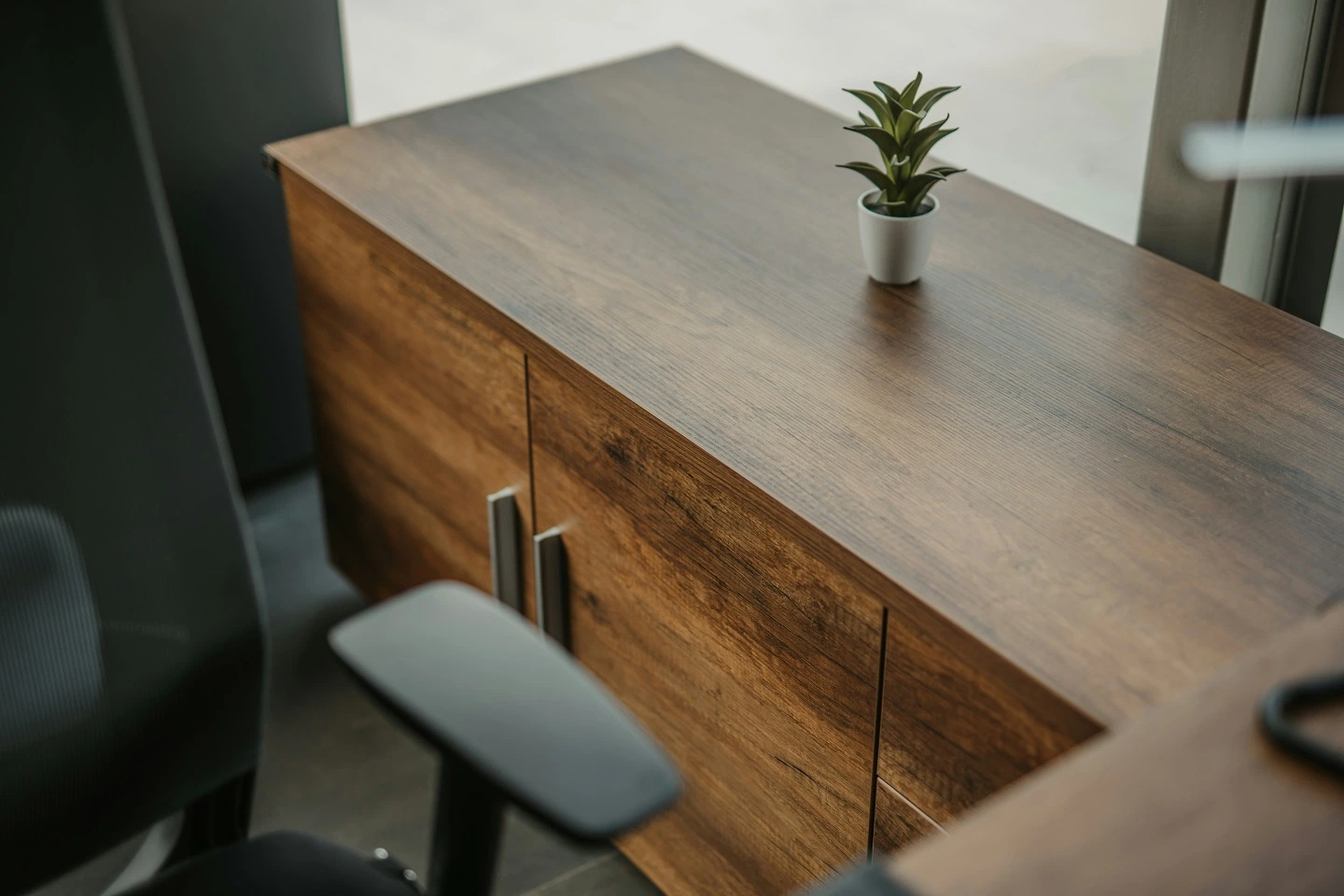Walnut Wood: Benefits and Drawbacks

Walnut wood has long been regarded as desirable by both designers and craftspeople. It is known as a representation of classic elegance and long-lasting quality because of its rich, particularly warm tones, enthralling grain patterns, and exceptional durability in a significant way. Walnut wood unquestionably generally leaves its mark on any environment it graces, from elegant furniture items that adorn big living rooms to sleek architectural features that offer a touch of elegance.
This Article explores the fascinating world of walnut wood, highlighting its distinctive qualities, a wide range of uses, and why it’s still a popular option for interior designers looking to create sophisticated, long-lasting interiors. We’ll reveal the factors contributing to its timeless appeal, demonstrate how adaptable it is to many design aesthetics, and provide insightful advice for both seasoned pros and design enthusiasts who want to use this magical interior wood material in their interior design.
Walnut Wood Color

For generations, designers and craftspeople have been captivated by the stunning colors found in walnut wood, which is mostly highly valued for its warmth and elegance. In contrast to many woods with a uniform look, Walnut offers a lively dance of colors that gives every area depth and personality. Anyone looking to use walnuts in their creative work has to be aware of this color scheme, or so they thought.
The heartwood, or mature inner portion of the walnut tree, is the central component in the color narrative of walnuts. Here, the wood takes on its richest and deepest tones, which range from basically warm chocolate brown to dark, nearly coffee-colored hues in a big way. When one thinks about walnuts, these deeper tones are frequently the first that spring to mind, for all intents and purposes contrary to popular belief.
They convey a feeling of refinement and classic elegance. The color narrative of walnuts continues, though. Typically somewhat lighter in color, sapwood is encountered as we proceed towards the outer layers. Pale yellows, creams, and gray undertones are frequently seen in this region. The interaction of the sapwood and heartwood produces a dramatic visual contrast that enlivens the overall style and subtly adds visual intrigue.
Light Walnut Wood
Light Walnut offers a distinctive and revitalizing alternative to walnut wood, typically connected with deep, dark tones. This lighter version of the well-liked wood species has a unique look that can revitalize various design applications in a big way. The color range of golden walnuts includes soft, creamy beiges, honey tones, and mild yellows in a significant way.
The effect of comparing these brighter tones against their darker counterparts is openness and airiness. Deep brown tones are less common, which increases light reflection and makes rooms feel more lightweight and cozier. The modern appearance of light walnut blends in seamlessly with current design trends. Its simple lines and delicate grain patterns add warmth and natural beauty without overpowering the visual environment, which goes well with minimalist and Scandinavian-inspired spaces.
Its adaptability also goes beyond contemporary fashions, which is quite significant. The lighter tones can provide visual interest and a sense of balance to classic settings by providing a lighter and airier alternative to darker woods.
Dark Walnut Wood
With its rich, warm tones, enticing grain patterns, and remarkable durability, dark walnut wood has long attracted designers and homeowners alike. This classic wood material is still highly valued in design for its ability to add sophistication, elegance, and timeless beauty to environments. Dark Walnut is distinguished by its deep color range, extending from rich chocolate brown tones to nearly coffee-like. This color’s depth gives off an air of warmth and elegance, which makes it a popular option for producing elegant and dramatic settings, or so they thought. The remarkable contrast between the lighter sapwood and the darker heartwood gives the wood\’s appearance even more visual depth and appeal. The attractiveness of dark walnuts goes beyond their striking appearance. This wood is generally highly valued due to its exceptional stability and strength, which is pretty significant. This makes it a dependable option for various applications, including flooring that can tolerate high traffic and furniture and frequently used cabinets. Dark Walnut has a built-in resistance to deterioration, so its beauty will last centuries.
Tips: Find the best engineered hardwood flooring sale in California.
Walnut Wood Grain and Finish

The walnut wood grain is usually fine and straight, with slight deviations. But nature frequently provides surprises, like the sporadic burls, curls, and waves that lend distinctive character and visual intrigue. These variants, or figured grain, are highly prized for their unique visual appeal.
The walnut wood’s innate beauty is enhanced, and the finishing procedure influences its overall look. Applying natural fish oil provides a light sheen while bringing out the wood’s natural color and grain pattern. Over time, it develops a warm patina as the wood ages naturally and is allowed to breathe.
A stained finish offers more color possibilities to personalize the walnut wood’s appearance. Stains offer more creative latitude, allowing you to add or enhance new hues. By being aware of walnut wood’s various finishing possibilities and grain patterns, you may fully realize its potential by carefully weighing your preferences, desired usefulness, and aesthetics.
Advantages and Disadvantages of Walnut Wood

For decades, walnut wood has enthralled interior designers and homeowners with its rich warmth and intriguing grain patterns, providing timeless beauty to furniture and homes. But Walnut has advantages and disadvantages, just like other wooden materials, so you should think carefully before using them in your design projects.
Walnut has its restrictions, though. Its slower growth rate and great demand might make it substantially more expensive than other popular wood alternatives. This could be a big drawback for initiatives with tight budgets. Walnut is generally strong but can also get dents and scratches, especially in lighter finishes. Maintaining its immaculate beauty requires careful handling and upkeep.
Furthermore, walnut wood ages naturally and becomes darker in sunshine. While some may find this appealing, it’s crucial to consider this possible hue shift when designing your layout. Finally, walnut wood can occasionally be challenging to find in certain areas or specified sizes due to its popularity and slower growth rate, which can cause logistical issues and affect project timeframes.
Unquestionably, Walnut wood’s timeless elegance and beauty are its main draws. Its alluring color scheme, which ranges from warm chocolates to rich, dark tones, provides a classic sophistication that works well with various design motifs. A genuinely compelling aesthetic is produced by the interaction between the lighter sapwood and the darker heartwood, which provides depth and visual intrigue.
Walnut has remarkable strength and durability in addition to its attractive appearance. Because of this, it is a dependable option for flooring, cabinets, and furniture that will withstand frequent usage and high traffic.
Tip: Is walnut an appropriate material for solid hardwood flooring?
Walnut Wood FAQs

- What is the specialty of walnut wood? Walnut is a heavy, strong, precious wood with a rich brown-chocolate color. Its well-density makes, and attractive grains make it an option for luxury home interior design.
- What are the pros of walnut wood? It can be polished many times. It is highly durable and has a rich color and attractive grain.
- What are the cons of walnut wood? While walnut is resistant to wear and tear, you can find other hardwood materials that are more resistant to scratches than walnut woos. Moreover, walnut wood may be discolored by direct sunlight.
- Does walnut cost more than oak? Yes. Walnut wood is more expensive than oak, while oak is more durable than walnut.
- What can you do with a Walnut wood? Walnut wood can be used in flooring, cupboards, shelves, musical instruments, furniture, and dishes.
- Is walnut expensive? Yes, walnut is one of the most expensive wood materials.
- Is walnut better than oak? Black walnut and white oak are two kinds of hardwood that are very popular among wood makers and homeowners. Answering this question depends on the purpose of your usage. Although both are durable, oak is a better option to floor your home due to its durability and lower cost.
- Is walnut a hardwood? Yes. Walnut is classified as a strong hardwood.
- Which kind of walnut is a higher quality wood? Black walnut wood is more qualified and expensive than other walnuts, making it a good option for flooring your home.
Conclusion
Walnut wood is still highly valued by both designers and craftspeople. It is a classic option for designing rooms with refinement, elegance, and timeless beauty because of its warmth, toughness, and adaptability. Walnut wood certainly leaves its imprint on any area it graces, from elegant furniture items that decorate opulent mansions to sleek architectural features that offer a touch of sophistication. Walnut wood will have a lasting impression on the design world for many generations as long as we continue to value its distinctive features and adopt sustainable techniques. You can explore different walnut woods at the Flooring Outlet and More wholesale in San Jose, CA.



Did you find what you were looking for?